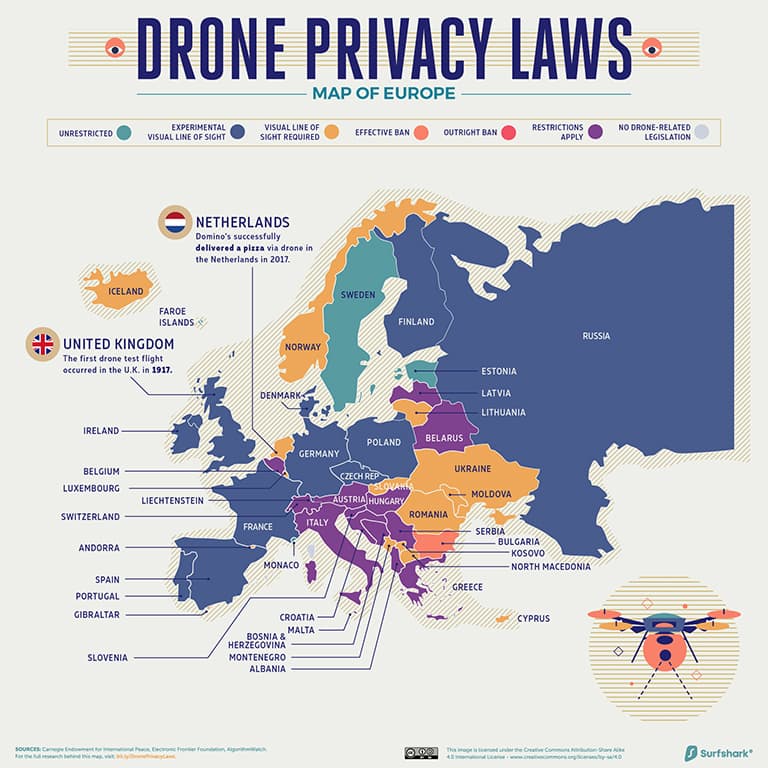Despite some hiccups with drones allegedly bringing Gatwick airport to a halt a few years ago, drones are only set to increase in popularity as the price of a device continues to drop. Indeed, the global drone industry is projected to double over the next five years, from $22.5 billion in 2020 to $42.8 billion in 2025.
This creates a large number of concerns for privacy as these drones can be flown from 5km away whilst recording (and streaming) 4k footage. Lawmakers around the world are struggling to keep up with the advancing technology, and while at least 143 countries have enacted some form of drone-related regulation, many experts contend that current drone regulation is insufficient to deal with the threat of widespread surveillance.
To shine a light on how drones are being regulated around the world, VPN specialist Surfshark compiled data on drone legislation around the world, and created a series of maps, which you can see below. The company collated drone legislation for 210 countries from sources including the US Library of Congress, among others.
“Drone laws around the world range from outright bans of the technology to relatively unrestricted flight, but most legislation focuses on how the drone is being operated and does not address nuances related to privacy,” a spokesperson said. “Surfshark aims to support the effort to establish an international regulatory framework for drone legislation. With this study, the team wants to bring transparency and clarity to an issue that is important to anyone who is concerned about their privacy (offline or online) in 2020 and beyond.”
See the maps below, along with some interesting findings/trivia from Surfshark. For the full research behind this project, see here. All picture credits: Surfshark.
The World

- An estimated one in every seven Americans has flown a drone.
- The world’s first drone pizza delivery occurred in Whangaparaoa, New Zealand in 2016.
- Brazilian company iFood recently was granted permission to use drones for food delivery in
the city of Campinas. - Israel is one of the largest exporters of drones to South America.
- Pilots in Ghana are using drones to disinfect public areas during the COVID-19 crisis.
- Several prefectures in Japan are training drones to help assist in public disaster response
efforts.
North America
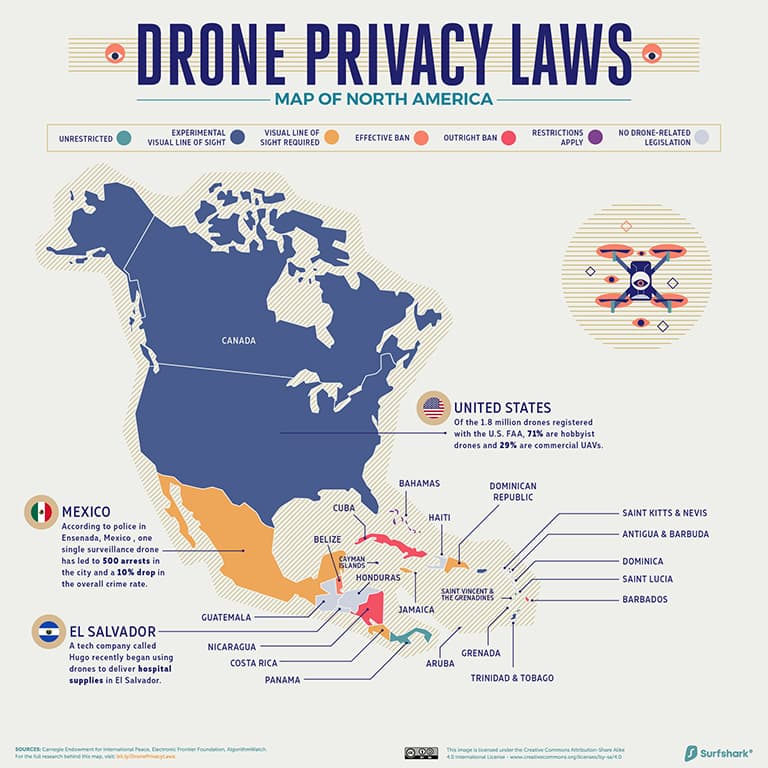
- According to police in Ensenada, Mexico, one single surveillance drone has led to 500 arrests in the city and a 10% drop in the overall crime rate.
- Of the 1.8 million drones registered with the U.S. FAA, 71% are hobbyist drones and 29% are commercial UAVs (Unmanned Aerial Vehicles)
South America

- Amazonian tribes in Brazil are using drones to track deforestation in the country
- A tech company called Hugo recently began using drones to deliver hospital supplies in El Salvador
Middle East and Central Asia
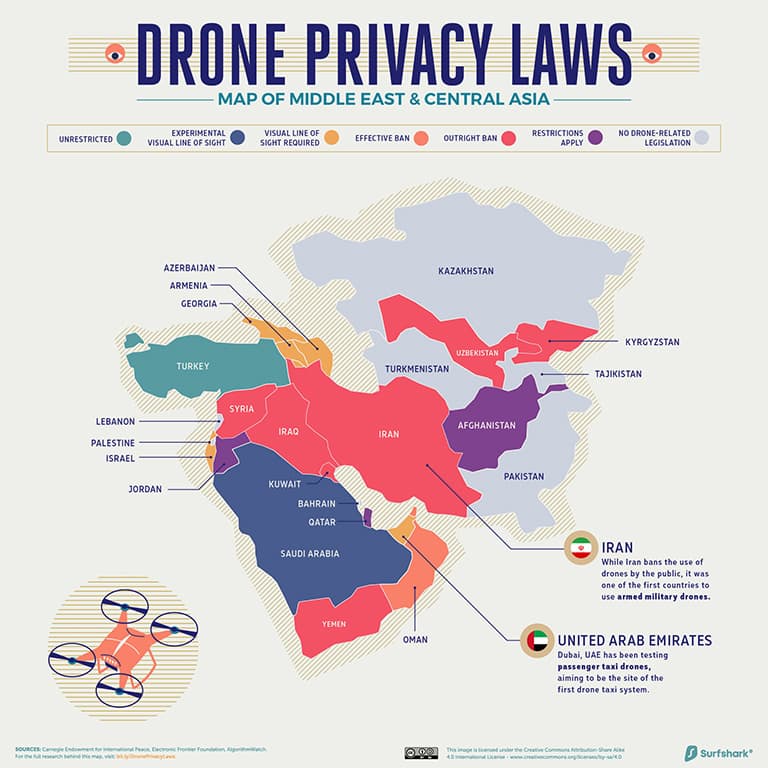
- China is home to the world’s largest drone manufacturer, DJI, which controls over half of the
world drone market share. - While Iran bans the use of drones by the public, it was one of the first countries to use
armed military drones. - The Malaysian police deployed a fleet of drones for surveillance purposes to help reduce the
spread of coronavirus. - Domino’s successfully delivered a pizza via drone in the Netherlands in 2017.Dubai, UAE has been testing passenger taxi drones, aiming to be the site of the first drone taxi system.
Europe
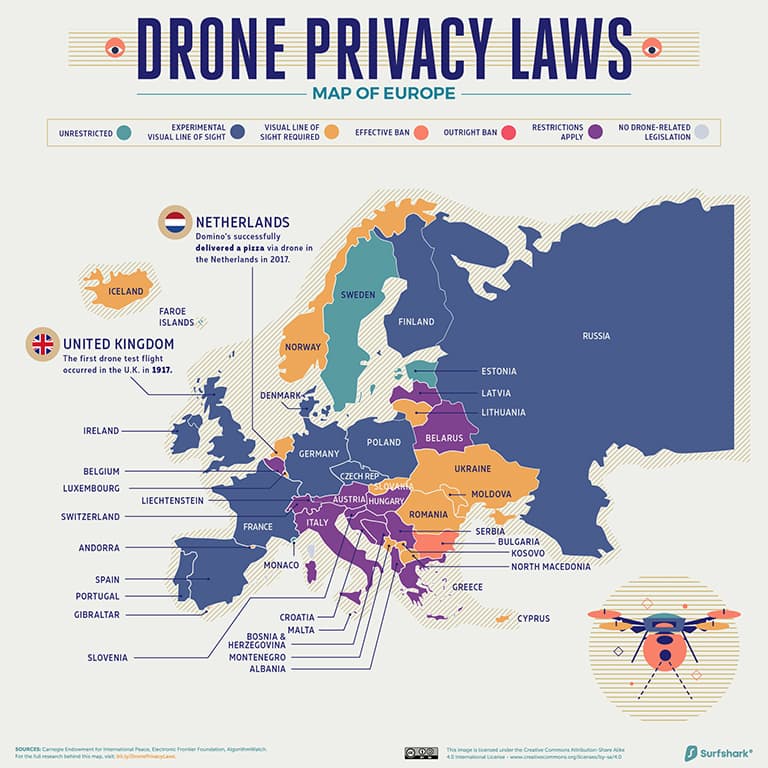
- Believe it or not, the first drone test flight occurred in the U.K. in 1917
- Domino’s successfully delivered a pizza via drone in the Netherlands in 2017.
Africa
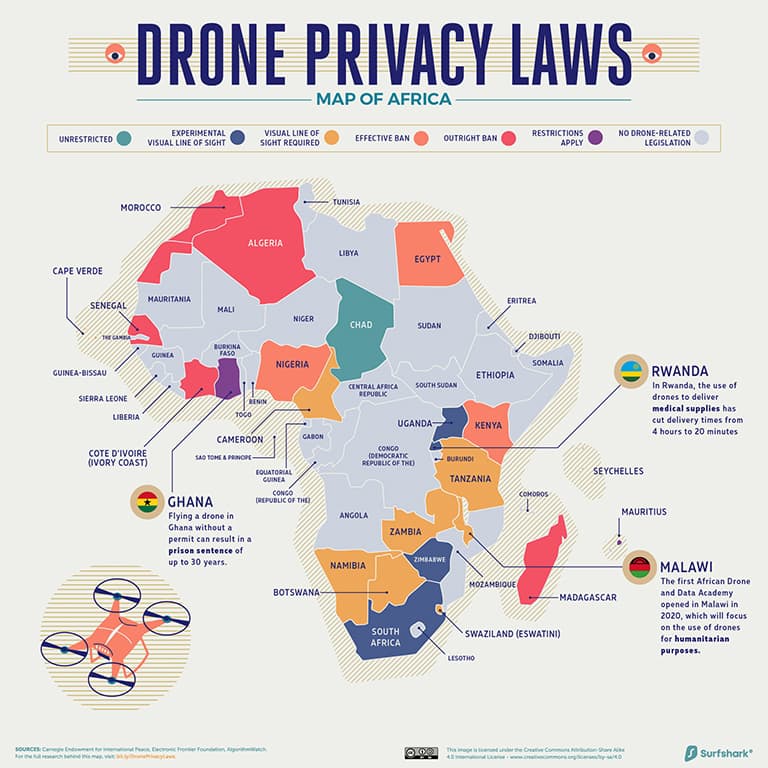
• Flying a drone in Ghana without a permit can result in a prison sentence of up to 30 years.
• The first African Drone and Data Academy opened in Malawi in 2020, which will focus on the
use of drones for humanitarian purposes.
• In Rwanda, the use of drones to deliver medical supplies has cut delivery times from 4 hours
to 20 minutes.Rest of Asia and Oceania
-

• There are some 5,870 licensed drone pilots in Australia.
• New Zealand’s beautiful landscapes make it one of the most popular destinations for drone
tourism.
• In Indonesia you have to be 20 years old to fly a drone weighing more than 2 kilos.
• The National Parks Board of Singapore employs 30 drones to monitor park users to ensure
they follow COVID-19 guidelines.Further reading
New drone laws: what you need to know

